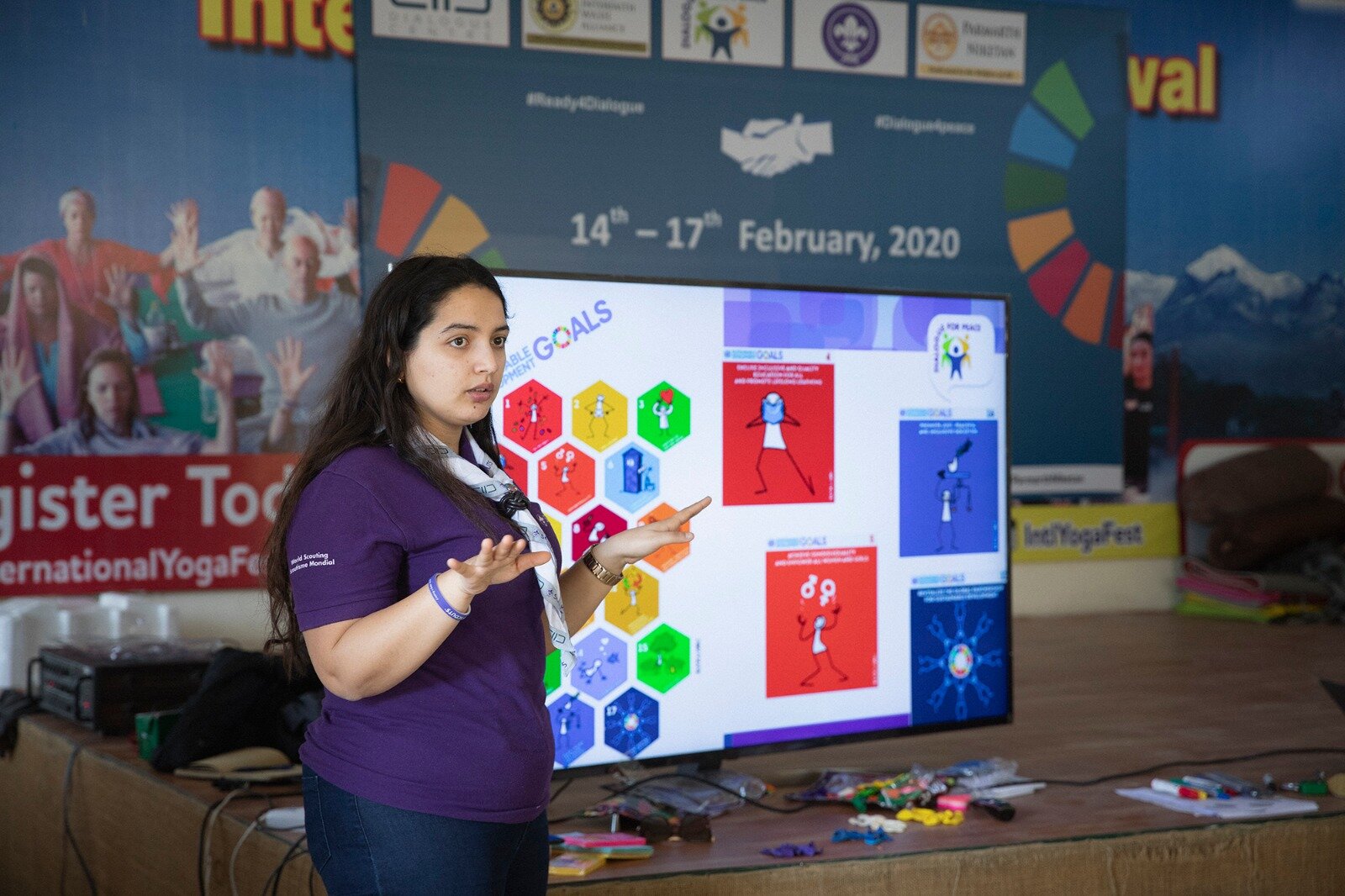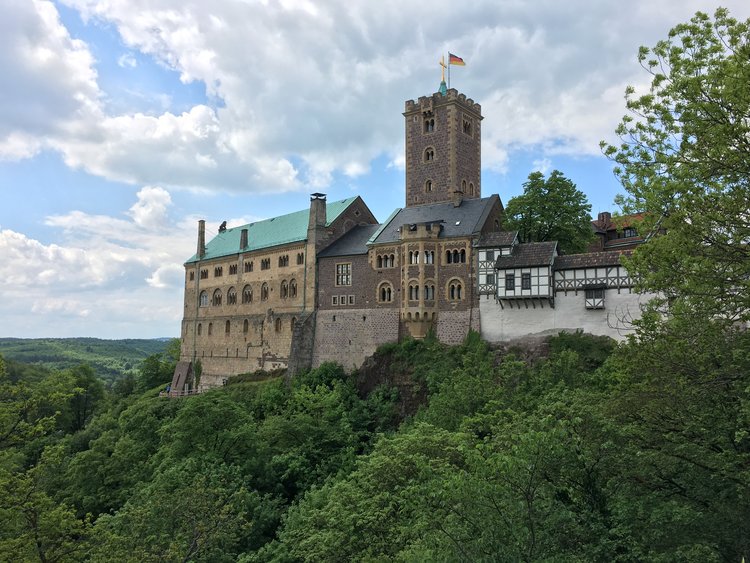Just a few steps down from Erfurt’s famous Krämerbrücke and its boutique shops, bespoke ice cream, and local charm, you’ll a mikveh (bath used for ritual purification) that dates back to the 13th-century. It’s a testament to the rich, and long, history of Jews and Jewish life in the central German city.
As I was standing in Erfurt’s mikveh a few weeks ago, I took a silent moment to reflect on the immensity of 900 years of Jewish history in the city.
Staring at the steps, I imagined the women who would descend them to bathe in the Gera river’s waters and wondered what their lives were like, what stories they could tell, what histories were embedded in the dusty sandstone and murky water of the memorial right in the midst of Erfurt’s old town.
I was humbled by the immensity of that history, the honor of standing in such a space and being given the opportunity to share such stories.
Mühlhausen citizens Nancy Krug, Pastor Teja Begrich, and Dr. Antje Schloms, pictured here in the town’s 19th-century synagogue, are part of honoring the history of Jewish life in the city. PHOTO: Ken Chitwood.
Thankfully, there are plenty of opportunities to learn about Jewish history in Germany — from well-known museums and monuments in Frankfurt and Berlin to lesser-known, but equally valuable, synagogues in places like Mühlhausen and Berkach.
But for this piece, I wanted to learn about more than history. And so, I spoke to Jewish leaders, researchers, historians, and other experts to learn what their history can tell us today and what Jewish life looks like in Germany now and in the near future.
The result is my latest piece with Religion News Service: “Germany celebrates a historic milestone of Jewish culture — while looking forward.”
*Many thanks go to the various people I spoke to for this piece. I am working on a couple of other articles related to this research, but for now I wanted to mention all the people who contributed background, provided coordination, or otherwise assisted with this piece: Kristin Luther with the city of Erfurt; Dr. Maria Stürzebecher, also with the city of Erfurt; Carolina von Stojentin with Thüringer Tourismus; Gundela Bach in the village of Berkach; Nancy Krug of the city of Mühlhausen; Pastor Teja Begrich of Mühlhausen; Dr. Antje Schloms of the Mühlhausen city archives, Prof. Dr. Annegret Schüle of Erinnerungsort Topf & Söhne; Prof. Dr. Carsten Schapkow of the University of Oklahoma; Alan Bern with Yiddish Summer Weimar; Helene Shani Braun in Berlin; Rabbi Alexander Nachama of the Jüdische Landesgemeinde Thüringen; Manfred Levy, education director at Jüdischen Museum Frankfurt; Alexandra Husemeyer of the Tora ist Leben project; and Martin Kranz of the Achava Festspiele Thüringen.





























